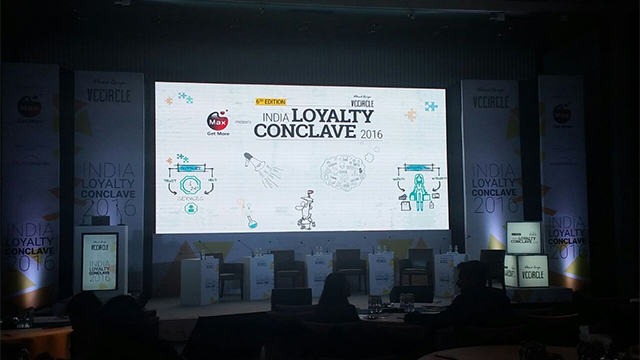
Human connection, love for the brand and an emotional connect with the consumer are some of the major drivers of loyalty programmes, said panellists at the VCCircle India Loyalty Conclave 2016.
This change has come about in the approach advertisers and marketers have adopted over the past few years, the panellists said at the event held in Mumbai on Wednesday.
In his opening address, CVL Srinivas, South Asia CEO at advertising firm GroupM, said that brands need to move toward real-time marketing and that social media has now become a new platform for rewards.
“There is very little planning that we do today. There is a lot of test and learn because of the change,†he said.
An example of the adaptive approach is Red Label tea’s campaign, which adopted the cause of the transgenders. “Nobody talks about the transgender cause. They came up with the idea of creating a transgender band,†added Srinivas. The ‘6 Pack Band’ pop group, created by Mindshare Mumbai, won the Glass Lions Grand Prix at the 2016 Cannes Lions International Festival of Creativity.
“To build a strong brand, you need to create brand love. You need to have that emotional appeal with your consumer, no matter which sector,†said Srinivas.
Manmeet Vohra, director of marketing and category at Starbucks, echoed similar views in a panel discussion on ‘The changing face of India’s loyalty ecosystem: Industry leaders on innovative incentives’. She said that it is difficult to isolate customer service from loyalty programmes. She cited a survey by Starbucks which showed that, besides coffee, customers went back to the store because of the connection they felt with the staff.
“We are not in the business of transactions. We are in the business of creating special moments for customers,†she added.
The panellists said that brands use multiple pillars of loyalty to drive rewards such as through experiences, through social media communication and by recognising the consumer.
Arnika Dixit, vice president and head of marketing for India and South Asia at American Express, said that instead of the reward itself, it is the experience of the reward that is critical. “Consumers are saying that feeling practical and efficient is a higher driver of reward satisfaction for them than feeling happy,†she said.
She added that it is important to be present where the consumer is and for that it is necessary to adopt a mobile-first approach and use social channels.
The participants also said that advertisers need to use consumer data more effectively.
“Everything is data led. Advertising is moving toward buying the right audiences,†Srinivas said. Delving into these sources of data, which are very disparate, and creating an integrated view of the consumer is one of the main drivers of building brand loyalty, he added.
Kartik Jain, who leads HDFC Bank’s marketing and customer analytics division, concurred with Srinivas in suggesting a strong data analytics approach toward loyalty. Analytics helps identify a customer’s behaviour preferences across various categories, said Jain, who felt the main drivers of brand loyalty are product, service and price.
Moving away from discounts
A common strategy that most brands adopted to attract customers to loyalty programmes was discounts, and this has been most evident in the online e-commerce sector. However, a shift is taking place.
Anish Khadiya, director of strategy and planning at fashion e-tailer Myntra, said that while discounts are the norm in online e-commerce, his company is trying to move away from it. “Part of that journey is through personalisation and part through experience,†he said.
However, this is not enough. A third element to drive customer loyalty is through engagement. Myntra intends to move away from discounts by offering its customers personalisation combined with engagement.
The move away from discounts is reflected even in the jewellery segment. In a panel discussion on ‘Creating segment-specific vs generic loyalty initiatives’, Pankaj Shah, chief executive of retail at Gitanjali Gems, said that loyalty is now more about cross-selling, service and the channel segment.
“Loyalty is not about points. It’s about the package. You have to pamper the customer and provide additional services,†he explained. Moreover, loyalty applies not just to the customer but to an organisation’s employees as well.
Aditya Rath, partner at audit and consulting firm KPMG, said that a sales and marketing professional is not judged by the programme or capability of channel but by the experience he or she can give to the consumer. Empowering the customer is a critical factor for a loyalty and rewards programme, Rath said.
According to Siddhartha Pahwa, chief executive of Meru Cabs, any loyalty programme today has to have its own TOMA (top-of-mind awareness). The channel on which a brand sells its product or service is crucial in determining the kind of loyalty programme it wants, whether a generic one or the brand’s own. Communicating with consumers on a digital platform is easier and more targeted, as opposed to selling products or services in a retail outlet, he said. In a mall or store, especially one which has multiple brands, it is more difficult to generate high brand awareness, he added.
Like this report? Sign up for our daily newsletter to get our top reports.